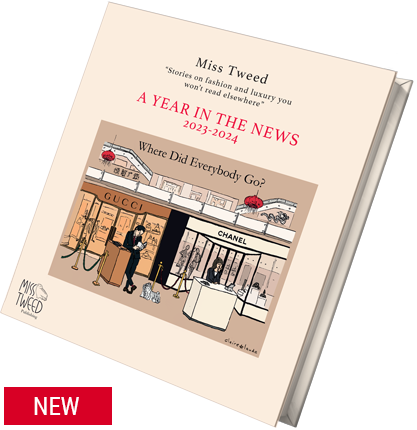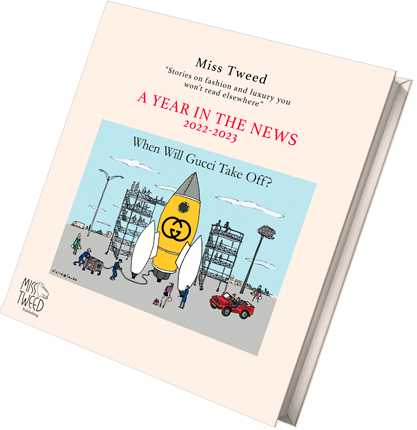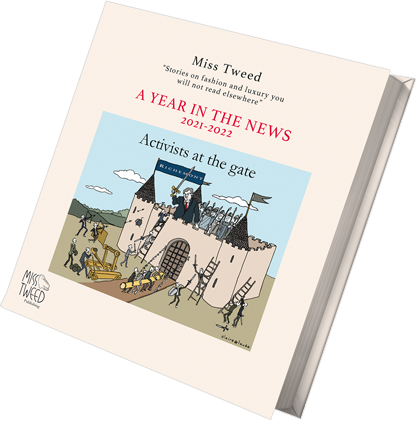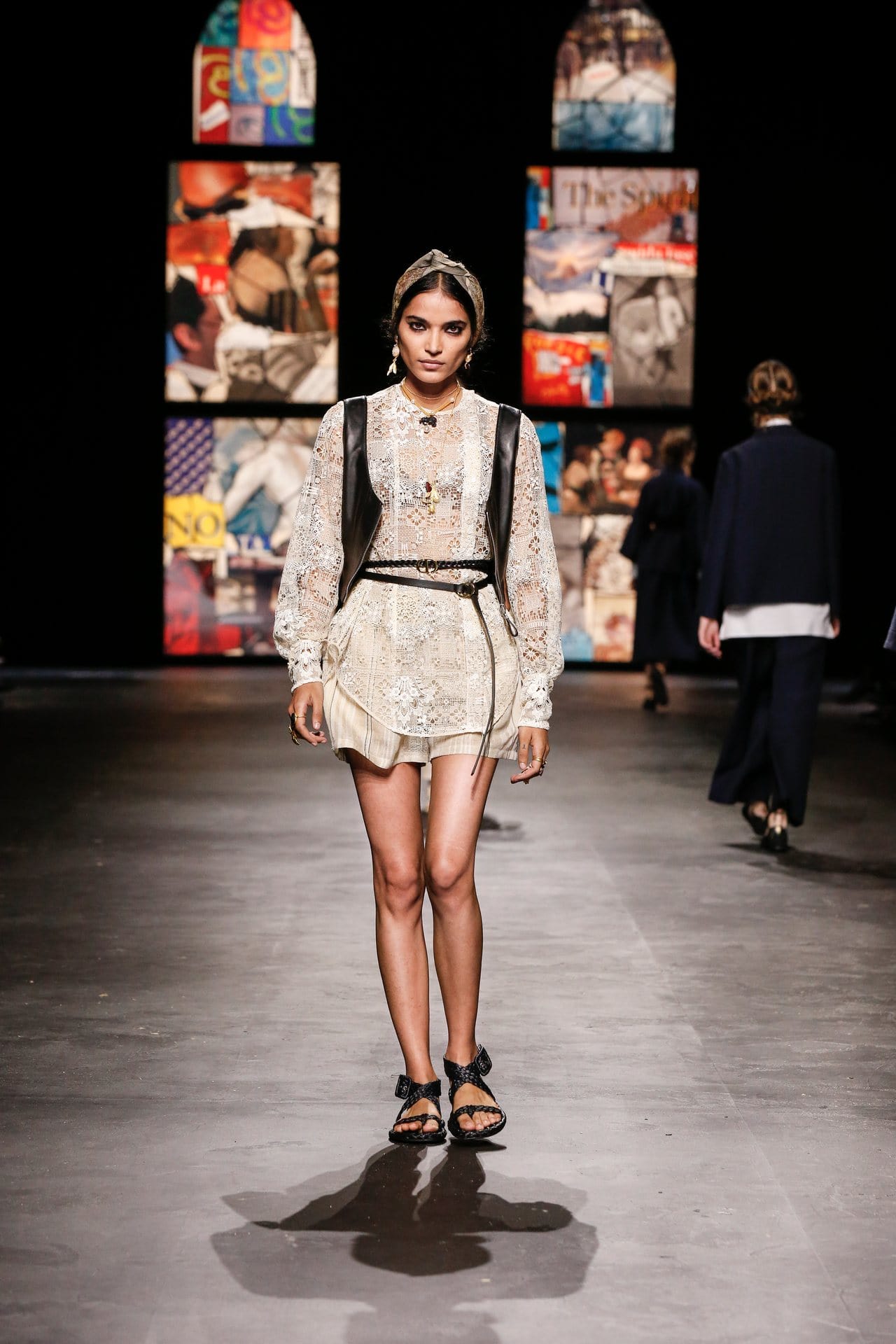It’s Tuesday, Sept. 29, the second day of Paris Fashion Week. Dior shows off its latest creations in a custom-built structure installed in the Jardin des Tuileries, just like last season. Covid-19 or not, almost nothing has changed. The 350 guests, as opposed to the usual 2,000, take their seats inside the “box” in a stylized cathedral decor designed by Italian artist Lucia Marcucci, known for her collages and work in “visual poetry.”
A dozen singers perform a Vocero, a Corsican funeral song. Everything goes smoothly until a black-clad woman starts parading on stage with arms outstretched, holding a yellow sheet that reads “We Are All Fashion Victims.” The audience is puzzled. What is going on? Dior designer Maria Grazia Chiuri got people used to her pugnacious slogans such as those displayed during her last show in March like Patriarchy = Climate Emergency. Antoine Arnault, eldest son of LVMH boss Bernard Arnault, is sitting in the front row and thinks for a minute that this intrusion is part of the show. The audience finds out only later that the stunt was serious. The activist was a member of the UK-born Extinction Rebellion protest group fighting climate change. The movement regards the fashion industry as built on “obsolescence, exploitation and overproduction.” The Dior event, one of the few physical happenings this Fashion Week, represents an ideal target. A fashion show like this is the tip of the iceberg for environmentalists.

This article is for subscribers only
True journalism, like goldsmithing and embroidery, relies on expertise.
Miss Tweed only focuses on proprietary information and analysis. By subscribing, you support a team of journalists who work only for you. Our mission is to bring you reliable and accurate information on the luxury and fashion industry which, in 40 years, has become one of the pillars of the global economy.
Subscribe
Login

A Year in the News 2023-2024 is a compilation of Miss Tweed's stories published during its fourth year. Like the third yearbook, it is a limited edition. Hence, it is a collector's item. It's designed to celebrate the work of illustrator Claire Laude. Each illustration runs next to the first two paragraphs of the story. It does not contain the entire story.
25 €

A Year in the News 2022-2023 is a compilation of Miss Tweed's stories published during its third year. Like the second yearbook, it is a limited edition. Hence, it is a collector's item. It's designed to celebrate the work of illustrator Claire Laude. Each illustration runs next to the first two paragraphs of the story. It does not contain the entire story.
25 €

A Year in the News 2021-2022 is a compilation of Miss Tweed's stories published online during its second year. Like the first yearbook, it is a limited edition. Hence, it is a collector's item. It is designed to celebrate the work of illustrator Claire Laude. Each illustration runs next to the first two paragraph of the story. It does not contain the entire story.
25 €

This book is a compilation of Miss Tweed’s stories during its first year. The digital revolution, the closely guarded secrets of LVMH, Richemont and Kering and the future of watchmaking are among the many topics Miss Tweed covered between the summer of 2020 and the summer of 2021. It does not contain the entire story.
25 €

Author and journalist Astrid Wendlandt conducted a four-year investigation into the
secretive world of fashion and luxury involving hundreds of interviews with top executives and
designers.
25 €

Comment l’industrie du luxe et de la mode, quasi-inexistante il y a quarante ans, est
devenue une puissance mondiale ? Dans cette anthropologie du glamour, la journaliste Astrid Wendlandt
épingle ses super-héros et analyse ses contradictions.
22 €
















